Devi (1960) Review
-
FilmSpell's Rating
Satyajit Ray’s Devi- The re-incarnation
In the late nineteenth century, Provatkumar Mukhopadhyay had written a short story based on a 16 year old girl who was considered as an incarnation of Devi (Goddess) by her religious father-in-law. The short story first published in the year 1899 appealed to Satyajit Ray which he thought could be made into a film with interesting character interconnections and the idea of a period film highly intrigued him.
Umaprasad’s father Kalikinkar (Chhabi Biswas) was an ardent devotee of the Goddess Kali and in a supposed dream, Kalikinkar sees his daughter-in-law, Dayamoyee as the incarnation of Goddess Kali on Earth. Trouble begins when Dayamoyee too starts believing her to be the incarnation leading to a bizarre set of events that befalls the entire family.
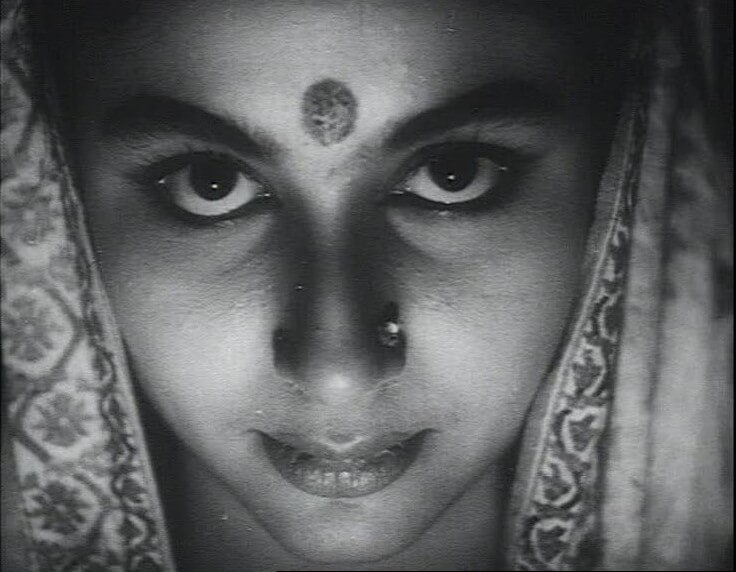
The film opens with the sequence of the Devi Durga (Goddess Durga) being worshipped as a part of the traditional festival of Bengal. Umaprasad though hails from a rich Zamindar family; he is the only one to study English language and western educational reforms. Umaprasad’s wife Dayamoyee is very interestingly portrayed by Ray as the supreme matriarch in the family which is depicted in various instances. For example, Dayamoyee’s parrot keeps calling her as “Ma” (Mother) affectionately or Taraprasad and Harasundari’s son who is Dayamoyee’s nephew yet loves to spend more time with his aunt than his own mother.
After the supposed conception of the thought revolving around incarnation, Kalikinkar makes way for Dayamoyee to be worshipped by everyone including the High Priest (who was sceptical of his lord’s theatrics at first but later gives into the same faith). In the erstwhile situation, a poor villager comes to Dayamoyee with his grandson who was suffering from illness as a last resort to revive the child by divine powers. In an uncertain manner, the child is made to drink the Charanamrita (Holy Water) which cures him. What ensue are people from different part of Bengal thronging at the holy place to witness the human incarnation of “Devi”.

The only two people who wouldn’t give in to the beliefs of Kalinkar were Umaprasad and Harasundari. Harasundari being the elder wife of the family is ignored by the majority of the family and is also a counterpoint to Dayamoyee’s character. She writes a letter to Umaprasad asking him to return at the earliest possible. Umaprasad is horrified and devastated to see his wife being made an idolatry symbol. After a certain point of time, most notably after reviving the stricken child Dayamoyee starts to believe that she is indeed a Goddess. Fate plays its irony where Taraprasad’s son falls ill and instead of consulting a doctor Kalikinkar presents him to Dayamoyee believing the mystic powers will cure him. In an eventual dismay his grandson doesn’t survive grieving the entire family. Harasundari call Dayamoyee a Rakhoshi (Demoness) out of sheer rage justifying her contrasting character to the protagonist.
You may also like: Doob – No Bed of Roses Review (2017)
The final scene is changed by Ray in the film in contrary to the story where Dayamoyee hangs herself. In the movie it is shown that Dayamoyee turns mentally unsound as Ray understands that with the concurrence of such events a mental breakdown of a 16 year old girl is inevitable. While a suicide would need a certain period of trance where the victim gathers the strength to commit such an act, it would have been more convincing to portray the loss of mental balance.

Rabindranath Tagore had originally conceived the idea of Devi but he chose to not write it as he believed Hindu fanatics would see this as a reason for his disregard for their religion and he might face flaks from different sections. He passed on the idea to Provatkumar Mukhopadhyay who penned it down and showed the final version to Tagore. Provatkumar being a Brahmin of the highest caste was somewhat protected from critics while Tagore understood that him being an active member of the Brahmo Society ( The society opposed idol worship) could raise a large number of outcry hence this decision.
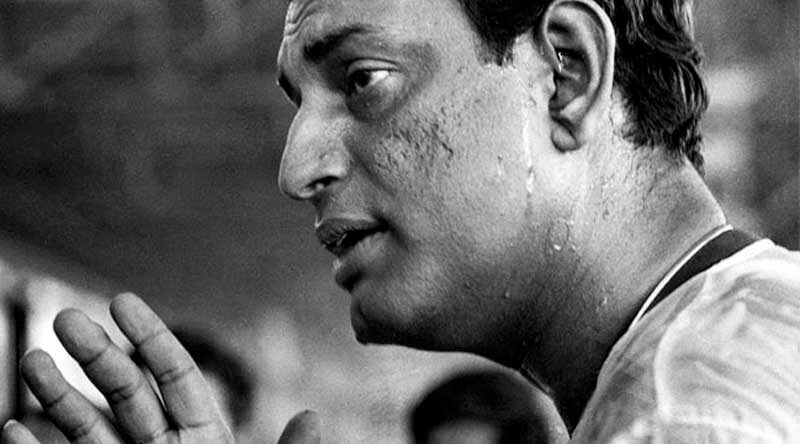
Satyajit Ray being a member of the same Brahmo Society had not expected the people to protest as he thought sixty years later the audience would be much more liberated in their consciousness. To his dismay the film created civil unrest in all places including even in the Parliament where the generic agenda was to ban the film as it might send a wrong message to the western audiences about Hindu culture and worship. The then Prime Minister, Jawaharlal Nehru intervened in the situation and spoke in favor of Ray which saved the film from a would be ban.
You may also like: Death Certificate film review
The masterpiece that “Devi” was is validated with the same intensity even in the present day Bengal or in a larger sense- present day India. The colorful shades of characters and the elements of mystified rigid ignorant mass of population, who continue to practice eccentric methods of worshipping Gods and Goddesses, provide space for such thoughts. To reword Ray’s quote India is still a country where cows are the holy mother, phallus a God and woman as a Goddess.


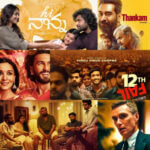
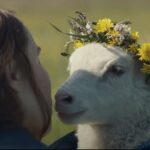

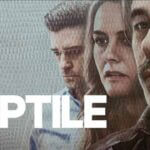









Add Comment